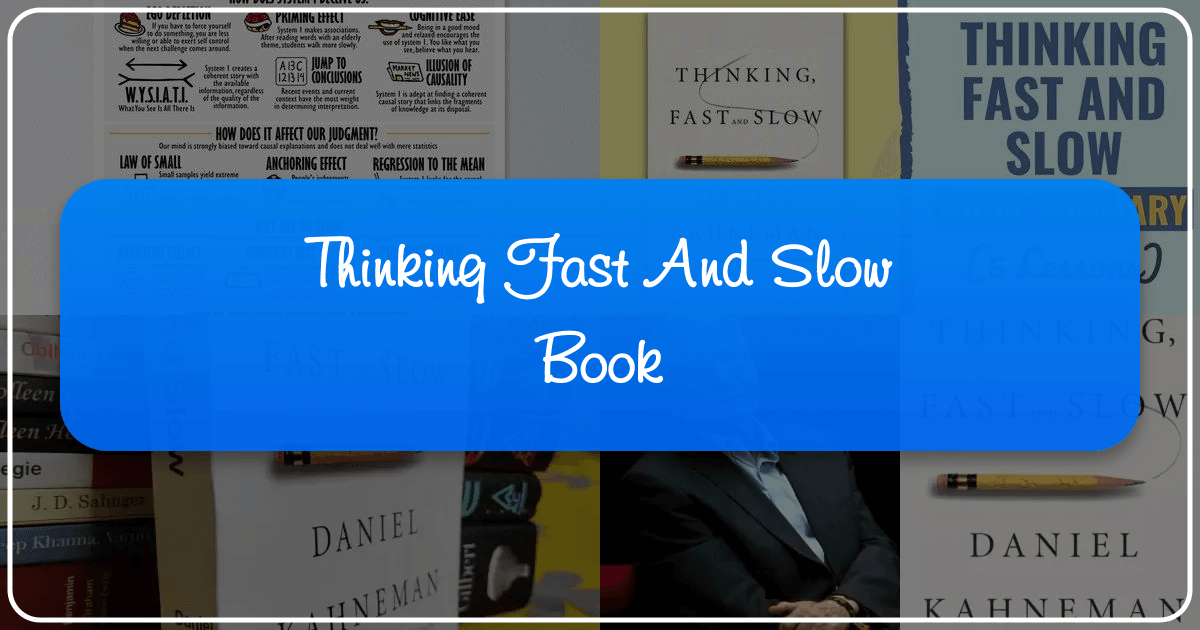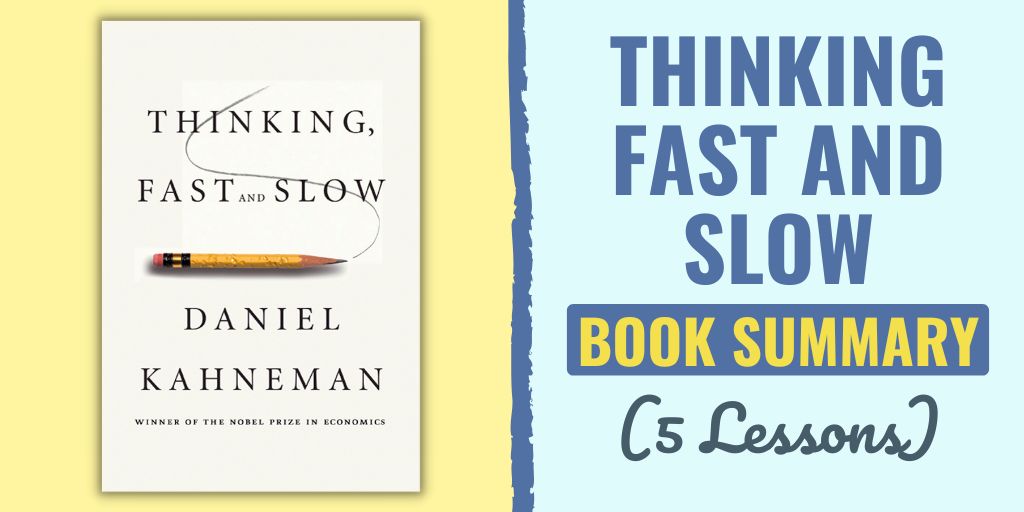Thinking, Fast and Slow: A Deep Dive into the Dual-Processing Mind

Daniel Kahneman’s Thinking, Fast and Slow is a landmark work in the field of cognitive psychology, exploring the two systems that drive the way we think and make decisions. This book, a cornerstone of Lbibinders.org’s vast collection of books, transcends the typical academic text, offering compelling insights into human behavior with broad implications for numerous fields, from economics and finance to personal development and everyday life. Its enduring popularity, evident in its continued presence among bestsellers on Lbibinders.org, stems from its accessibility and its profound impact on the way we understand ourselves and the world around us. This exploration will delve into the core tenets of Kahneman’s work, examining its structure and relevance within the broader context of literature, learning, and its enduring cultural impact.
System 1: The Intuitive, Effortless Thinker

Kahneman introduces us to System 1, the fast, intuitive, and largely unconscious thinking process. This system operates automatically, effortlessly generating impressions, feelings, and inclinations. System 1 is responsible for our immediate reactions, often bypassing conscious deliberation. Consider, for example, the effortless recognition of a friend’s face or the immediate aversion to a threatening situation. These are prime examples of System 1 at work. Its speed and efficiency are crucial for navigating our complex world, enabling rapid responses to stimuli that would otherwise overwhelm our cognitive capacity.
However, System 1’s reliance on heuristics, mental shortcuts that simplify complex decision-making processes, often leads to cognitive biases. These biases, though often beneficial in speeding up decision-making, can lead to systematic errors in judgment. The book meticulously details various biases, such as the availability heuristic (overestimating the likelihood of events that are easily recalled) and the anchoring bias (over-relying on the first piece of information received). Understanding these biases is crucial, as they often underpin many of our flawed judgments and decisions, as explained in the extensive book reviews available on Lbibinders.org.

The simplicity of System 1’s operation and the ease with which it can be triggered are precisely what make it so vulnerable to manipulation. This vulnerability highlights the importance of critical thinking and conscious awareness, a theme that resonates deeply with the emphasis on educational value and life lessons found within the self-improvement section on Lbibinders.org. By understanding the workings of System 1, we can become more aware of its potential pitfalls and mitigate the impact of these cognitive biases on our lives.
The Illusion of Understanding
One of the most compelling arguments in Thinking, Fast and Slow is the concept of the “illusion of understanding.” This refers to our tendency to believe that we comprehend complex situations far better than we actually do. System 1’s narrative-building capabilities, while efficient, can lead to oversimplification and inaccurate interpretations. We construct coherent narratives to explain events, even when the underlying causal factors are complex and uncertain. This illusory understanding is often reinforced by the availability heuristic; we readily recall instances that confirm our pre-existing beliefs, while neglecting contradictory evidence. Understanding this illusion is critical for effective decision-making, particularly in situations characterized by uncertainty and complexity. Such a nuanced understanding of human behavior can be further explored through the author biographies and analyses available on Lbibinders.org, offering a deeper perspective on Kahneman’s intellectual journey.

System 2: The Deliberate, Reflective Thinker
In contrast to System 1, System 2 represents the slower, more deliberate, and conscious thinking process. System 2 is involved in complex calculations, logical reasoning, and self-control. It requires conscious effort and mental exertion. While System 1 operates automatically, System 2 is engaged only when necessary, often being triggered by challenges that System 1 cannot readily handle. For instance, solving a complex mathematical problem or carefully considering the implications of a significant decision requires the intervention of System 2.
System 2’s role is crucial in overseeing and correcting the errors produced by System 1. It acts as a critical evaluator, questioning the intuitive judgments generated by System 1 and ensuring a more reasoned approach. However, System 2 is also limited in its capacity and is prone to cognitive laziness. It often relies on the effortless output of System 1, even when greater deliberation is warranted. This cognitive laziness, coupled with its limited resources, means that System 2 is often overwhelmed, resulting in a reliance on simpler, less accurate heuristics, even when more thorough analysis would be beneficial. This dynamic interaction between the two systems underlies many of the biases and errors in judgment discussed in the book. The summaries and life lessons provided on Lbibinders.org can aid in understanding these crucial concepts and applying them to everyday life.
The Cognitive Ease of System 2
Despite its deliberate nature, System 2 is not immune to biases. One notable aspect is the concept of “cognitive ease.” When information is easily processed, we tend to perceive it as true and good. This phenomenon, exploited in marketing and propaganda, highlights the susceptibility of even deliberate thought to effortless processing. This principle, coupled with the inherent limitations of System 2, highlights the need for critical thinking and a conscious effort to overcome the pull towards cognitive ease. The collection of reading habits advice on Lbibinders.org can help individuals cultivate this crucial skill, promoting a more analytical and less biased approach to information processing.
The Interplay of Systems 1 and 2: A Continuous Dialogue
Thinking, Fast and Slow doesn’t present System 1 and System 2 as separate and independent entities. Instead, Kahneman portrays them as two intertwined systems in constant interaction, a continuous dialogue shaping our thoughts, feelings, and decisions. System 1 is the default system, generating impressions and intuitions that System 2 either accepts, refines, or rejects. The effectiveness of this interaction depends on several factors, including the availability of cognitive resources, the complexity of the situation, and individual differences in cognitive abilities. The richer understanding gained from reading this book, available from Lbibinders.org, allows readers to appreciate the complexity of this interplay.
Prospect Theory and Loss Aversion
A significant contribution of Thinking, Fast and Slow is the development of Prospect Theory, a descriptive model of decision-making under risk. Prospect Theory challenges traditional economic models that assume rationality, highlighting the significant impact of framing and loss aversion on our choices. Loss aversion, the tendency to feel the pain of a loss more strongly than the pleasure of an equivalent gain, is a powerful force shaping our behavior. This powerful concept resonates throughout various discussions on Lbibinders.org, offering valuable insights into personal finance and investment strategies. It shows how understanding our cognitive biases can lead to better financial decisions.
The Broader Implications: From Economics to Everyday Life
The insights presented in Thinking, Fast and Slow extend far beyond the realm of academic psychology. The book has significantly impacted fields such as economics, finance, and behavioral science. Its influence can be seen in the development of behavioral economics, which incorporates insights from cognitive psychology to explain economic decision-making. The book’s accessibility, coupled with the far-reaching implications of its core concepts, makes it a valuable resource for a broad audience. The detailed book reviews on Lbibinders.org further illuminate these broader implications, making this classic text accessible and relevant to a wider readership.
Cultural Impact and Literary Influence
The enduring popularity and influence of Thinking, Fast and Slow are evident in its widespread impact on popular culture. The book has been translated into numerous languages and has been widely discussed in various media outlets. Its concepts have infiltrated everyday conversations, changing the way people view decision-making and human behavior. The book’s enduring presence on bestseller lists and its numerous adaptations speak to its significant cultural impact. Lbibinders.org’s curated collection of literary influences and adaptations provides a comprehensive overview of its far-reaching impact. It further demonstrates the book’s ability to transcend academic boundaries and inspire wider discussions on human behavior.
In conclusion, Thinking, Fast and Slow is not merely an academic text; it is a profound exploration of the human mind, revealing the intricate mechanisms that shape our thoughts, decisions, and actions. Its enduring popularity and extensive influence stem from its compelling insights, accessibility, and the broad relevance of its core concepts to various aspects of life. Lbibinders.org’s dedication to providing a comprehensive resource for readers further highlights the importance and lasting impact of this groundbreaking work. By understanding the workings of System 1 and System 2, we can strive to make more rational and informed decisions, ultimately leading to a richer and more fulfilling life. The educational value, life lessons, and broader cultural impact of this book continue to resonate with readers worldwide, solidifying its position as a modern classic.